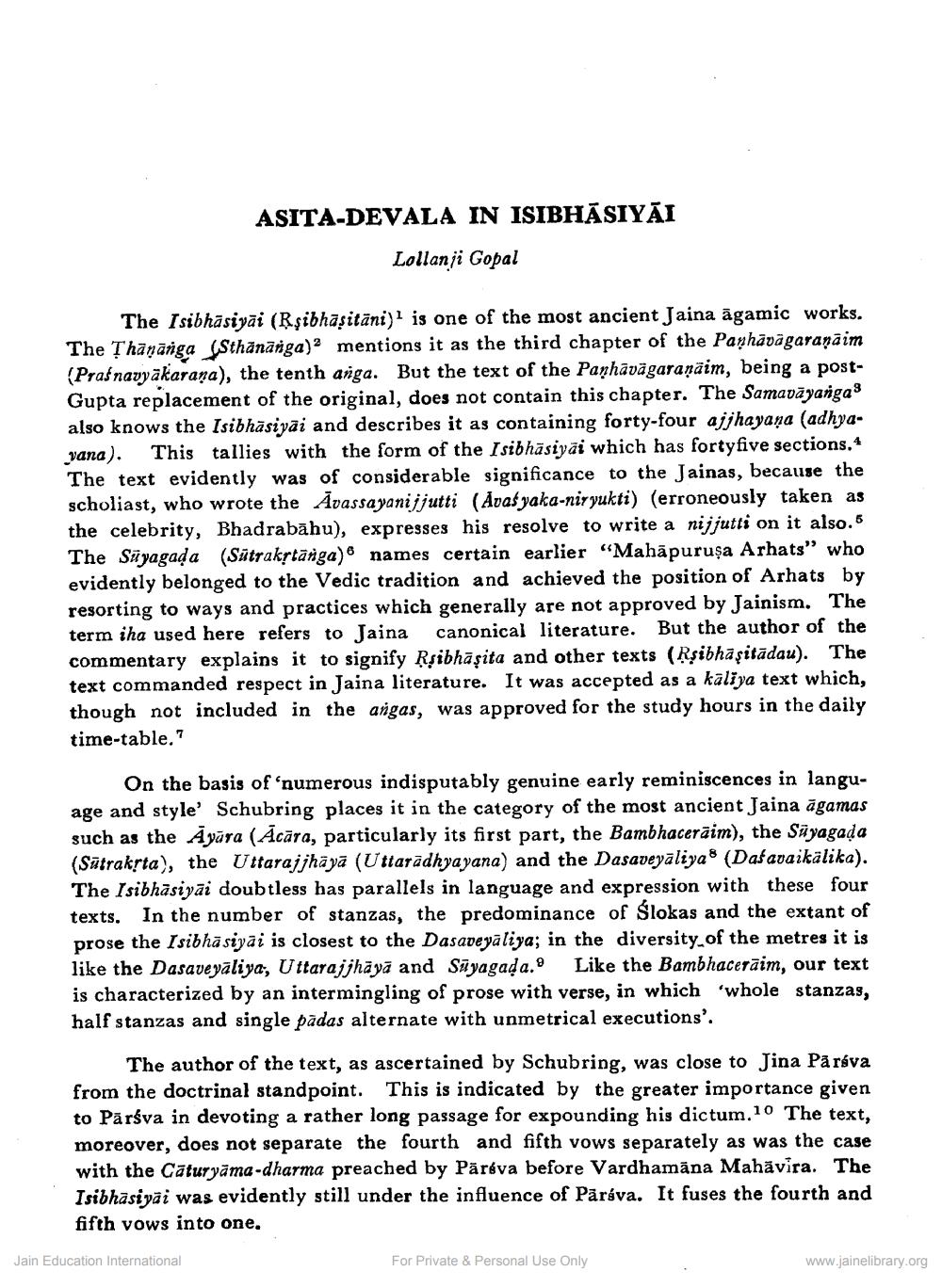Book Title: Asita Deval in Isibhasiyai Author(s): Lallan Gopal Publisher: Z_Aspect_of_Jainology_Part_3_Pundit_Dalsukh_Malvaniya_012017.pdf View full book textPage 1
________________ ASITA-DEVALA IN ISIBHASIYAI Lollanji Gopal The Isibhasiyai (Rsibhasitani) is one of the most ancient Jaina agamic works. The Thananga Sthanäsga) mentions it as the third chapter of the Payhanagaraṇaim (Prafnavyakaraya), the tenth anga. But the text of the Paghavagaraṇaim, being a postGupta replacement of the original, does not contain this chapter. The Samavayanga3 also knows the Isibhäsiyai and describes it as containing forty-four ajjhayana (adhyavana). This tallies with the form of the Isibhäsiyai which has fortyfive sections.1 The text evidently was of considerable significance to the Jainas, because the scholiast, who wrote the Avassayanijjutti (Avafyaka-niryukti) (erroneously taken as the celebrity, Bhadrabahu), expresses his resolve to write a nijjutti on it also. The Syagada (Sütrakṛtänga) names certain earlier "Mahāpurusa Arhats" who evidently belonged to the Vedic tradition and achieved the position of Arhats by resorting to ways and practices which generally are not approved by Jainism. The term iha used here refers to Jaina canonical literature. But the author of the commentary explains it to signify Ṛsibhāṣita and other texts (Rṣibhāṣitādau). The text commanded respect in Jaina literature. It was accepted as a kaliya text which, though not included in the angas, was approved for the study hours in the daily. time-table." On the basis of 'numerous indisputably genuine early reminiscences in language and style' Schubring places it in the category of the most ancient Jaina agamas such as the Ayara (Acara, particularly its first part, the Bambhaceräim), the Sayagada (Sutrakṛta), the Uttarajjhaya (Uttaradhyayana) and the Dasaveyāliya" (Dafavaikālika). The Isibhasiyai doubtless has parallels in language and expression with these four texts. In the number of stanzas, the predominance of Slokas and the extant of prose the Isibhasiyai is closest to the Dasareyaliya; in the diversity of the metres it is like the Dasaveyaliya, Uttarajjhaya and Suyagada. Like the Bambhaceraim, our text is characterized by an intermingling of prose with verse, in which 'whole stanzas, half stanzas and single pādas alternate with unmetrical executions'. The author of the text, as ascertained by Schubring, was close to Jina Paréva from the doctrinal standpoint. This is indicated by the greater importance given to Parsva in devoting a rather long passage for expounding his dictum.10 The text, moreover, does not separate the fourth and fifth vows separately as was the case with the Caturyäma-dharma preached by Päréva before Vardhamana Mahavira. The Isibhäsiyai was evidently still under the influence of Päráva. It fuses the fourth and fifth vows into one. Jain Education International For Private & Personal Use Only www.jainelibrary.orgPage Navigation
1 2 3 4 5 6 7 8 9 10 11 12 ... 14
